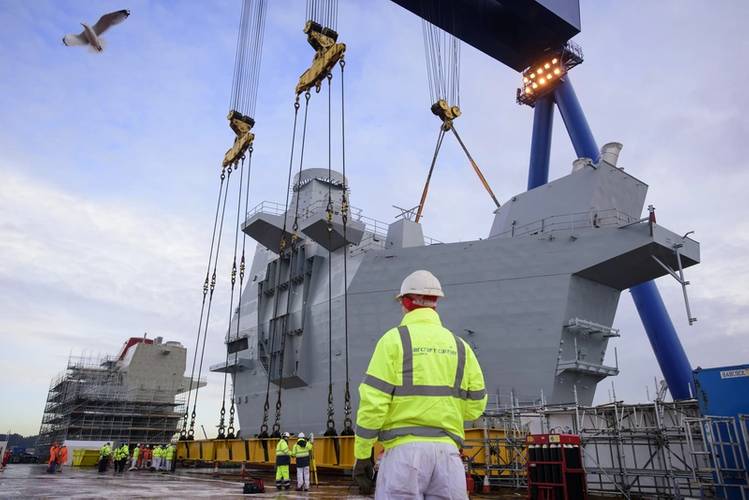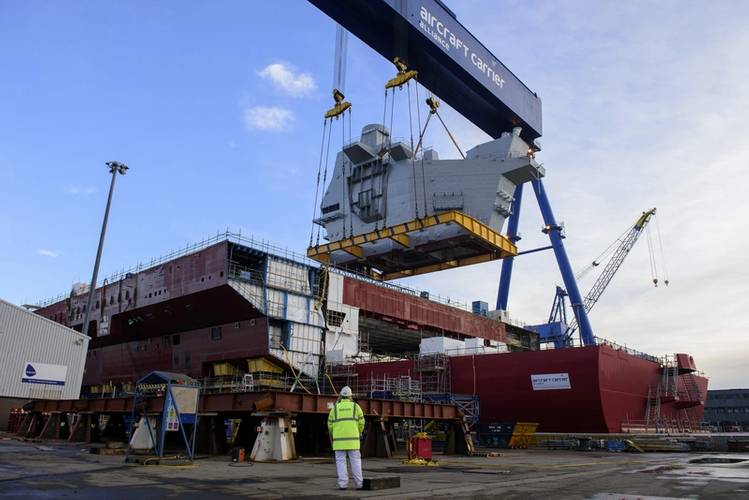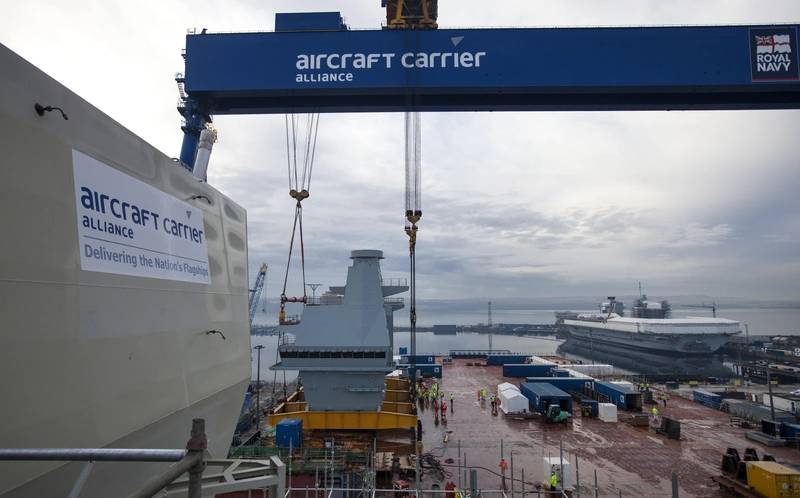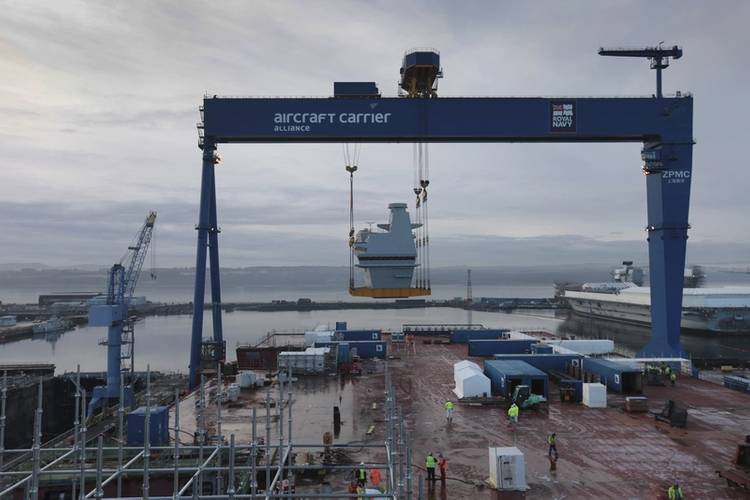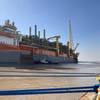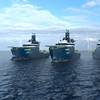The Aircraft Carrier Alliance successfully lifted one of the final sections of the second Queen Elizabeth Class aircraft carrier in Rosyth on Friday, January 8 following its arrival from Glasgow.
The 750-metric-ton block was raised 25 meters in the air using the Goliath crane and placed on the deck of HMS Prince of Wales, bringing assembly work on the ship significantly closer to completion.
This section to be assembled is known as the Aft Island and will control aircraft operations aboard HMS Prince of Wales. Its journey from Glasgow, where it was constructed, took it 1,335 miles around the south coast of England in order to reach its destination in Fife.
Angus Holt, HMS Prince of Wales Delivery Director, said, “This is a significant day for everyone working for the Alliance and there’s a real sense of excitement to see this important section being assembled on to the ship. With the second island positioned on the flight deck of HMS Prince of Wales the scale of the engineering and construction task that the Aircraft Carrier Alliance is undertaking is clearly visible.
Defense Minister, Philip Dunne, said, "The final section of HMS Prince of Wales being put in place marks a huge achievement for the thousands of highly skilled people across the U.K. that have contributed to the construction of what will be the U.K.'s largest aircraft carriers.
"Supported by a £178 billion equipment budget, the carriers - along with our new Lightning II aircraft, which we are buying more quickly - will provide the spearhead of the U.K.'s military capability for the next 50 years, keeping the nation safe at home and protecting our interests abroad."
As the 750-metric-ton island settled onto the flight deck, it sealed into place a plaque positioned underneath it. This contains the emblems of the Royal Navy, Royal Air Force and Army. The plaque was handed over to the Aircraft Carrier Alliance by Rear Admiral Henry Parker and will remain part of the fabric of the warship for its entire life.
The second of the Queen Elizabeth Class Carriers, HMS Prince of Wales, will be structurally complete by mid-2016 and will be handed over to the Royal Navy in 2019 with Initial Operating Capability in 2023.
The Queen Elizabeth Class are the first aircraft carriers in the world to use an innovative twin-island design. The Aft Island is responsible for the ship’s mission systems and acts as an aircraft control tower. The Forward Island contains the bridge and is primarily responsible for the command of the ship. While each island has a primary role, both are able to incorporate the other’s role in an emergency, increasing the survivability of the ship.
The carriers will be the centerpiece of Britain’s maritime capability. Each 65,000-metric-ton aircraft carrier will provide the armed forces with a four acre military operating base, which can be deployed worldwide. The vessels will be versatile enough to be used for operations ranging from supporting war efforts to providing humanitarian aid and disaster relief.
HMS Queen Elizabeth and HMS Prince of Wales are being delivered by the Aircraft Carrier Alliance, a unique partnering relationship between BAE Systems, Thales U.K., Babcock and the Ministry of Defense. A national endeavor, at its peak the program directly employed 10,000 people across six build yards. While manufacturing and commissioning is now solely focused in Rosyth, the skilled and diverse workforce is sourced from across the country, including many from BAE Systems in Glasgow and Frimley.







